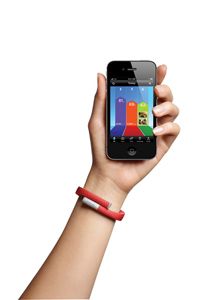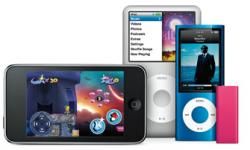There's a special type of fitness junkie that craves as much information about their workout as possible. Tracking data, charting progress and projecting future goals is as much of a joy as that post-workout rush of endorphins. Today, a host of companies are producing gadgets designed to provide information to the athletically inclined. That includes the company Jawbone, best known for its hands-free Bluetooth devices.
The Jawbone UP is a fitness accessory and iPhone app. It looks like a simple rubber wristband. But under the rubber casing is a device that can keep track of how much you've moved throughout the day and even alert you if you've been sitting around for too long. You wear it all the time, removing it only whenever you need to synchronize the data or charge the wristband.
Advertisement
The Jawbone UP isn't a complete circle -- the ends of the wristband don't join together. On one end is a cap that covers a 3.5-millimeter plug, also known as a TRS plug. When plugged into an iPhone, the Jawbone UP can transmit data collected during your activities.
The app, also provided by Jawbone, displays the data so that you can track your progress. It also monitors your sleep patterns during the night. The app has a food diary feature that lets you enter your meals during the day as well so that you can see if you're burning more calories than you're consuming.
Advertisement


